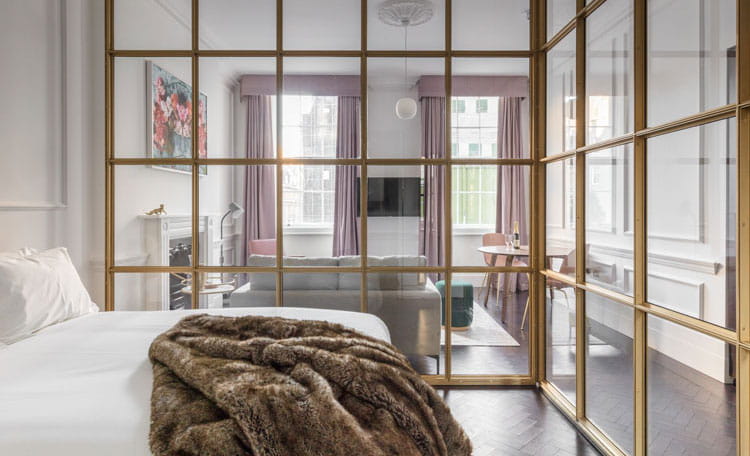Hotel industry indicators continue to slide during the wait for the summer season
- Any recovery in terms of hotel industry activity remained imperceptible throughout the first quarter. Occupancy remained low despite the proportion of hotels operating in a number of destinations not exceeding 30% of total supply.
- The main indicators for Spain as a whole showed occupancy of 23%, whilst RevPAR (revenue per available room) stood at €16.75, a fall of some 65% in comparison with the first quarter of the previous year. The only indicator showing a degree of resilience was the ADR. At 73 Euro, this was some 24% lower than the figure for the first three months of 2020.
- The hotel sector is in an expectant mood with regard to the summer season, hoping for a resurgence of demand for holiday destinations on both the Spanish mainland and the islands. The fact that an occupancy of 60% has been reached in the United States during the second week of April indicates that the vaccine rollout represents a key step in overcoming the crisis.
The main indicators brought together in the Hotel Sector Barometer for Spain, produced jointly by STR and Cushman & Wakefield, confirm that tourism and hotel activity are yet to show any signs of recovery. It is important to bear in mind that the first three months of 2020 were the last quarter showing normal activity, at least up until mid-March when the pandemic was declared. This explains the fact that indicators are continuing to decline.
Occupancy for Spain as a whole stood at 23% during the first quarter, some 54% lower than the figure for the same period during 2020. Bearing in mind that the first quarter traditionally shows the lowest levels of activity, the figure demonstrates that indicators have yet to recover in anticipation of restrictions on movement being lifted within the European Union over the coming months. For its part, RevPAR (revenue per available room) remained at €16.75, a slide of some 65% in comparison with the first quarter of 2020. Meanwhile, the ADR (average daily rate) amounted to 73 Euro, some 24% lower than the figure for last year. This underlines the effort made by hoteliers to maintain prices despite meagre occupancy.
According to Paula Reinoso, STR’s Account Manager for Spain and Portugal, “2020 was a tough year for hotels and 2021 hasn’t got off to the start that was anticipated. Expectations around the opening of hotels in Spain and Portugal over Easter were dashed due to restrictions on movement throughout Europe as a result of the surge in cases during the first quarter. Nevertheless, and as per the case in 2020, it is hoped that firstly domestic and then international demand will contribute to a rapid improvement in hotel performance in holiday destinations. The foregoing will, however, depend on the lifting of restrictions and the rollout of vaccination programmes across Europe and internationally.”
Madrid achieved occupancy of 26%, whilst the figure for Barcelona was stuck at 21.5%
Neither the Christmas nor Easter period led to improvements in occupancy for Spanish hotels. According to data from the Barometer, at 33.4% the city of Zaragoza achieved the best figure for occupancy, followed by Madrid with 26%. At 20.4%, the greatest drop in percentage terms was suffered by the Canary Islands, the figure for the past year being 63%.
In the opinion of Albert Grau, Partner and Co-head of Cushman & Wakefield Hospitality Spain, “a large number of hotels currently remain closed and are postponing their reopening based on events. The situation is forcing businesses to seek out survival mechanisms and hopes are being placed in the resurgence of holiday destinations during the summer season. The sector will regain visibility once restrictions on movement are lifted, however this depends on a speeding up of the vaccine rollout in Europe”.
The ADR stands at €73, a fall of 24% in comparison with the first quarter of 2020.
The ADR decreased by some 24% during the first quarter, going from €96 ito €73. Despite representing a significant decrease, the fall has been cushioned by efforts on the part of the industry to sustain prices. This strategy is key to making the reactivation of the sector more consistent. Within this softening of prices, the largest fall was seen in Barcelona with a reduction of 40%. In contrast, some price increases were even seen in the Balearic (+20%) and Canary Islands (+0.5%). This increase is down to the scarcity of offerings in that the majority of hotels remained closed during this period.
According to Paula Reinoso, “Hotels in tourist destinations have fared better by being the first to open their arms to domestic demand in the leisure segment and due to the scarcity of available offerings. They have made the most of this advantage, demonstrating good pricing strategy. Owing to Spain’s dependence on the leisure segment (87% of total demand), the outlook for recovery to pre-pandemic levels points towards 2023 according to Tourism Economics. Barcelona has shown resilience despite the impact suffered as a result of its dependence on the international and MICE segment. Looking to the future, Barcelona will continue to boast a strong events calendar that will help it along the road to recovery.”
RevPAR failed to exceed 17 Euro, a fall of some 65% in comparison with last year
In comparison with the same period in 2020, revenue per available room (RevPAR) slumped by 65% during the first quarter of 2021. The largest falls were seen in Alicante (-75%), Barcelona (-72.2%) and Malaga (-72.3%). With the exception of Marbella (with a fall of just 31.8%), the least severe fall in RevPAR was posted by the Balearic Islands, at 41%.
In the words of Bruno Hallé, Partner and Co-head of Cushman & Wakefield Hospitality Spain “it is particularly difficult to make comparisons at the moment. The key lies in working together to offer safe tourist destinations enabling a step-by-step, consistent recovery in activity. In terms of major cities, the achievement of stronger performance will depend on the evolution of the business segment. In order to attain this, we need to be in a position to reassure travellers”.
STR’s indicators show that demand has bounced back in countries with fewer restrictions on movement, such as the United States where occupancy was close to 60% during the second week of April. Demand and the desire to travel also appear strong in Europe in the expectation of good news regarding vaccine rollouts. The Hotel Sector Barometer brings together data from 1,200 hotels and more than 165,000 rooms in mainland Spain. The study is the product of an alliance between STR, a worldwide provider of benchmarking, analytics and market knowledge specialising in the hotel sector, and Cushman & Wakefield Spain, the world leader in real estate services.




